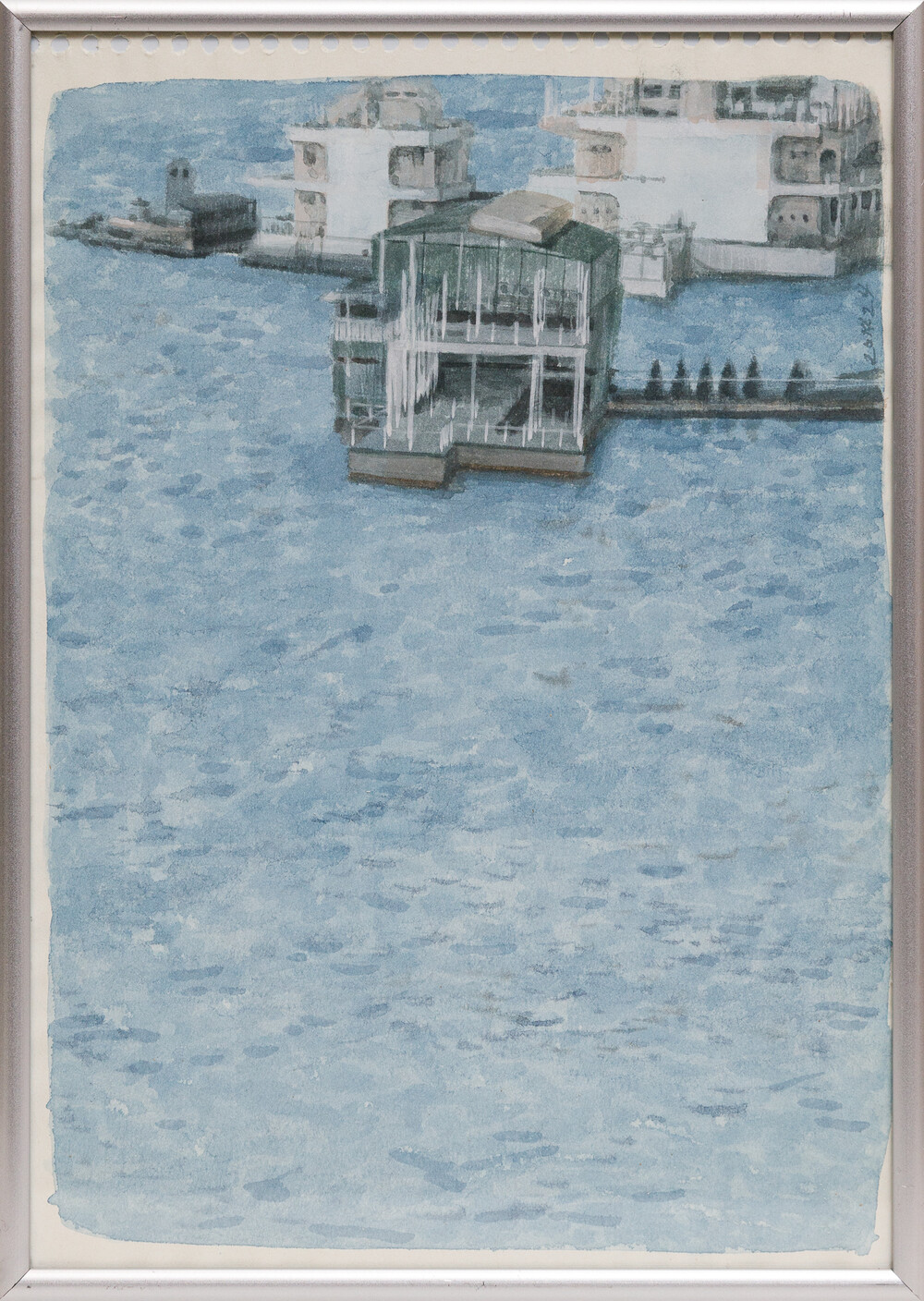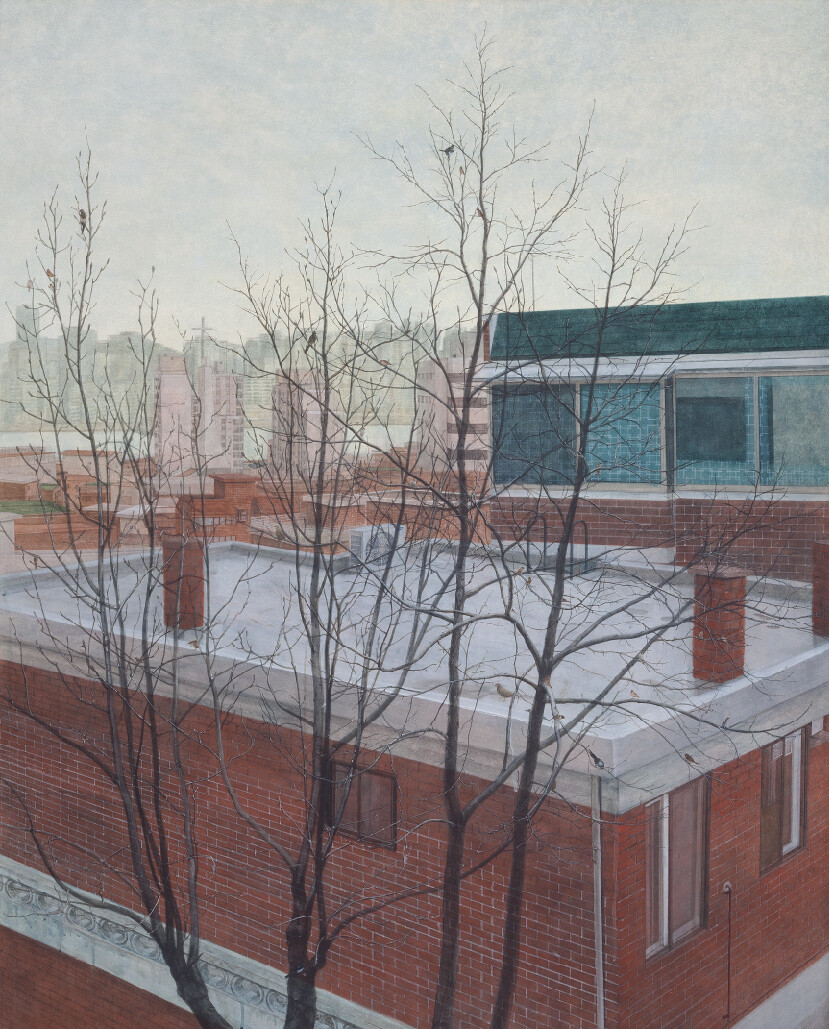[An interview with Lee Hyunho] Perhaps now, although a bit slow in pace
Interview. Soi Kwon
Footprints taken step by step are easily erased but steps ahead seem to be unpredictable and situations seem quite different now. But instead of being hung up to uncertainties, he finds ways of bearing his present. Lee Hyunho moves forward on his pace by following his own tracks.
Lee Hyunho is a second son of a mother and father, a husband of a beautiful wife, a father of two babies, a teacher of art classes, a guardian of a 13 year old dog, and an artist still at work. His wife just gave birth to a baby boy, and his two sons are one year apart. So it seems he has to give up his sleep for some time. It is difficult for him to take a deep breath now with all the circumstances, he is always racing against time. Sometimes he is distressed not being able to wholly concentrate on his work as an artist, but at the same time he is sorry not being able to give a more stable support to his family as a father. Like the quote from Ralph Allison, life is not about the control but to live. It is difficult to maintain the balance between his role as a loving husband, responsible father, and a passionate artist. But he tries his best one step at a time. He had not let go of all his desires, he still has many things in mind as an artist. He struggles to live up to both his responsibility and his passion. He hypnotizes himself thinking life is never too easy and that art demands many difficulties. Hopefully the days of fully concentrating on art will come. He tries not to think of the worries and uncertainties of the future but to face his realities that lay ahead of him day by day. He tries to firmly plant his feet on the ground and move on without stopping. He instinctively observes what lays infront of him. His paintings consists of endless strokes. And like his paintings he lives his days not imitating nor exaggerating but sincerely. His days are not too serious nor too light. He seeks for the joy from tranquilness of every day that he lives.
Congratulations, your wife just gave birth to your second boy!
She just came back yesterday from the postnatal clinic. The boys are one year apart. I heard it’s quite a big stress for the older, so I have many things to consider and look after. I didn’t sleep well last night. I feel my condition today is quite poor.
Talking about kids, I’m curious about your childhood.
As a kid I think I wanted to be good and be recognized. I took art classes with couple of my friends but instead of acknowledging each other I remember competing to be better. With art and comics we argued that each of our works were better than others. We used to have paintings covered in our wall when I was young. I think the collection of our house was quite good. I liked the landscape painting hung over the sofa in particular. We also had a print of Chagall, which I didn’t feel very comfortable with. I didn’t like the color and the strokes.
Did the birth of your child change the way you work?
The basics didn’t change. But the breath seems to have gotten shorter. The process was quite important to me because of the way I worked. My paintings consist of strokes overlapping in many layers. Recently it has been difficult to work for a long period of time so I had to find different ways that worked for me. I had changed my method of working that works better in a shorter span of time. Drawing is a good example. I was a bit pressured and it was somewhat a burden when working on a large scale. But now with the drawings the process is much more enjoyable. Some drawings I did everyday, and some in two days. The sparrows shown in the exhibition was possible because I was able to work in short spans of time, although the whole process was long.
here did the sparrows come from? I didn’t know you work with ceramics?
They aren’t ceramics. They are made of paper mache. I think I made about one hundred sparrows. I thought the grouping of many would work fine as a whole, Individual sparrows to me was similar to the strokes applied in the paintings. In 2012, I shared a house with a roommate. The house had a large window with a view of a persimmon tree which was quite romantic. I used to look out the window often even when the weather got cold. When the green leaves fell to the ground, the persimmon ripened, and when the fruit disappeared I observed its bare branches. I heard the birds sing in the morning and watched them sip water, resting on the bare branches. The view out the window interested me and I started making notes and took pictures. I ended up painting them in my paintings. That’s where the birds came from.
The sparrows you made appears to be a bit different. It looks a bit chubby.
They are the sparrows that we know of. The whimpy sparrow gets chubby getting ready to survive the winter. It keeps itself warm by storing fat and fluffing its feathers. The bird adjusts to the cold to survive the winter. Observing them, I felt sorry for the bird out the window in the cold. Recently, I thought of what I can do in my spare time in between classes. When I thought of the possibilities the sparrows came to mind. That is how it all started.

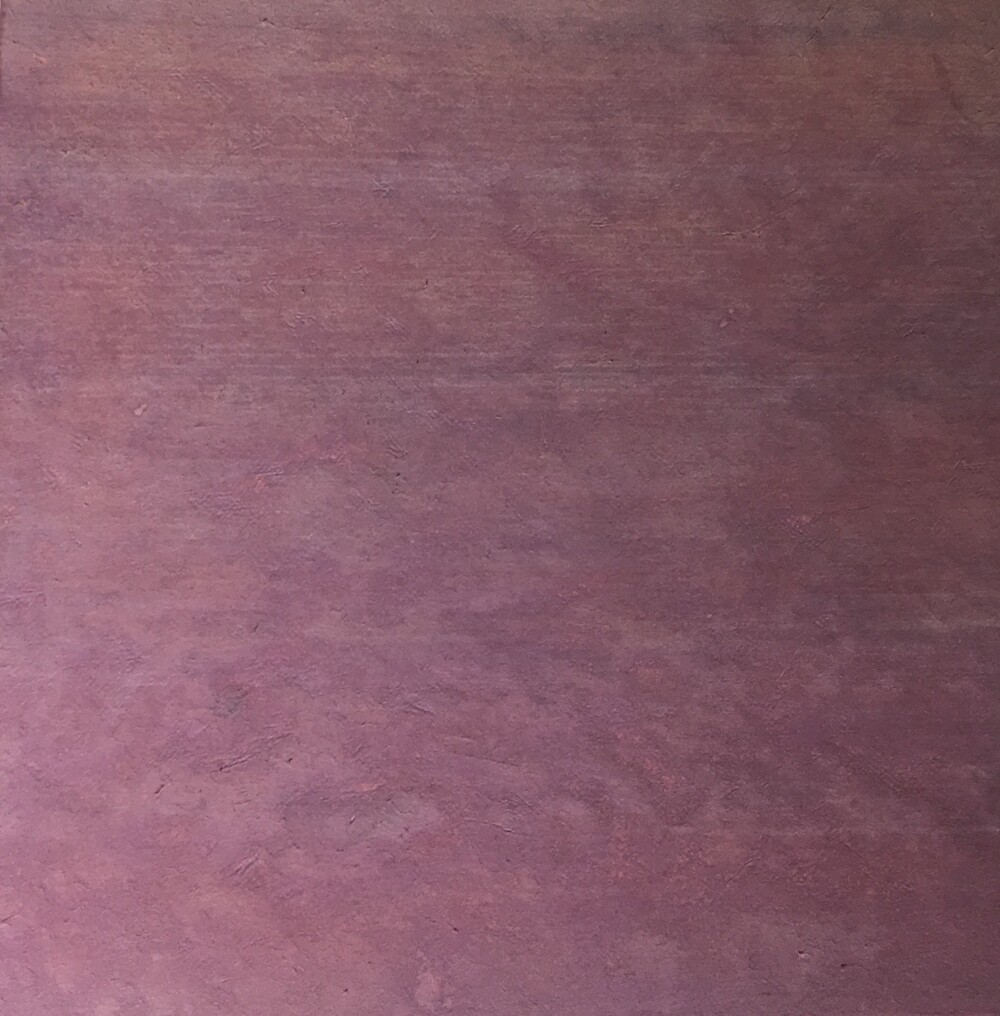

I heard you teach at an art academy. How are the classes?
It takes me 4 hours round trip. Although it takes up much of my time, I like teaching kids. I started teaching in 2008, so it’s been some time now. A student who I taught from 7 is now in his teens. I am happy to see him grow up and through parents I learn the aspects of parenthood. It is exciting to see students coming up with interesting ideas. Some ask me what I paint, and they show interest in my sparrows which I started making in my spare time at the academy. I sort of joined the sparrows into my classes and the kids developed it into many different things. They didn’t make limitations to birds. They made chicken, lamb and etc. The kids free and ever-changing expressions are inspiring to me. They make me reflect on my work, thinking I may be restricting myself to things that are already settled.
What are the subjects that carry on in your work?
Scenes of daily life that anyone encounters. Something so used to that one may not notice. Trees nearby and woods from streets of your apartment complex and trivial things around us. The ordinary things that you meet everyday on your way to work, or at walks. I don’t seek for things, I am normally interested in the things within my boundaries. When I have a certain thing in mind, I take pictures and notes. I observe more carefully. I try to feel the differences depending on certain hours and the time of year. When my curiosity becomes meaningful in some ways, I take it into my work. My works aren’t difficult so I hope the viewer feel at ease in front of my work. Looking at my paintings, I hope the viewer gets more aware of the aspects of their ordinary life. I think this will open up many means of communication for me as an artist.

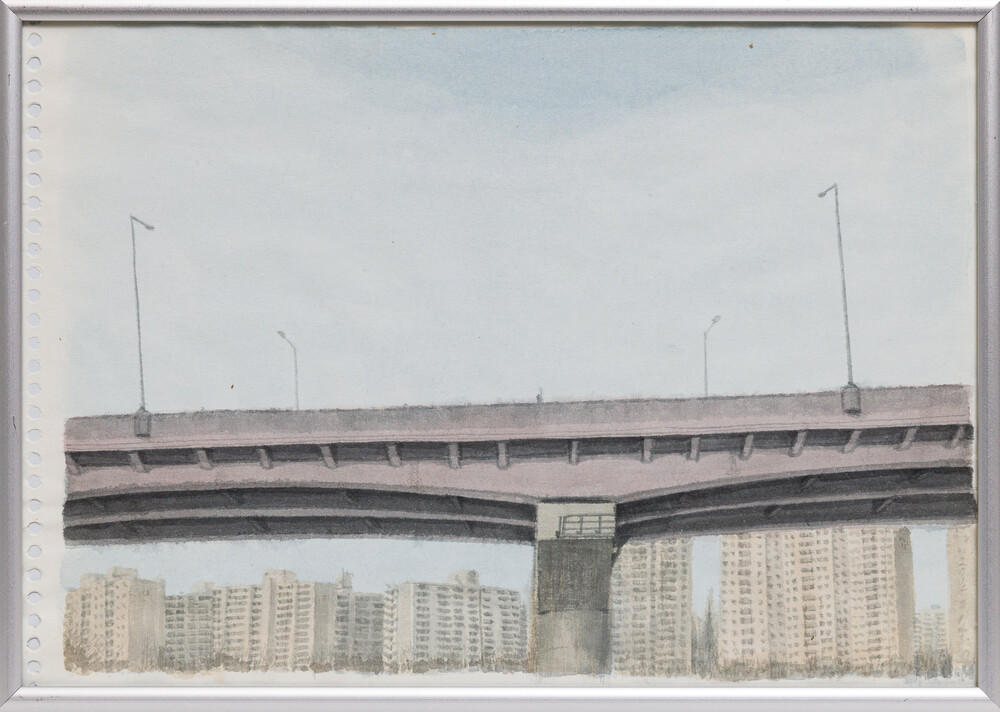
You seem to be a delicate observer.
I don’t think art is a reckless act, that one does whatever they want. For me, I eliminate the fantasy and the imagination and I try to capture the reality set in its place. I concentrate on the facts without the variations and distortions.
How did the banner work evolve?
When painting landscapes, I always came across the image of banners. I feel sympathy for the isolated, so feel obligated to express it in a more interesting manner. Because oriental paintings are difficult to store and maintain, I wanted to go beyond the limits and experiment in something different. And one day the banners just came to my mind. Banners are made with a purpose but once the duty is finished it is thrown out. Illegal banners are sometimes taken down and in many cases it is a local governments distress. But I felt I just wanted to make a better use of this material that gets thrown out. I used the banners as a canvas, painting on the back sides of the advertisement. I painted chunks of cement, steel frames from construction sites, foundations of stone towers, flowers and plants that are commonly found with acrylics. Because oriental paint was difficult to paint on the banners. Underneath the images, the phrases of advertising was still visible. I was occupied with the banner works while I was in the residency for about a whole year.
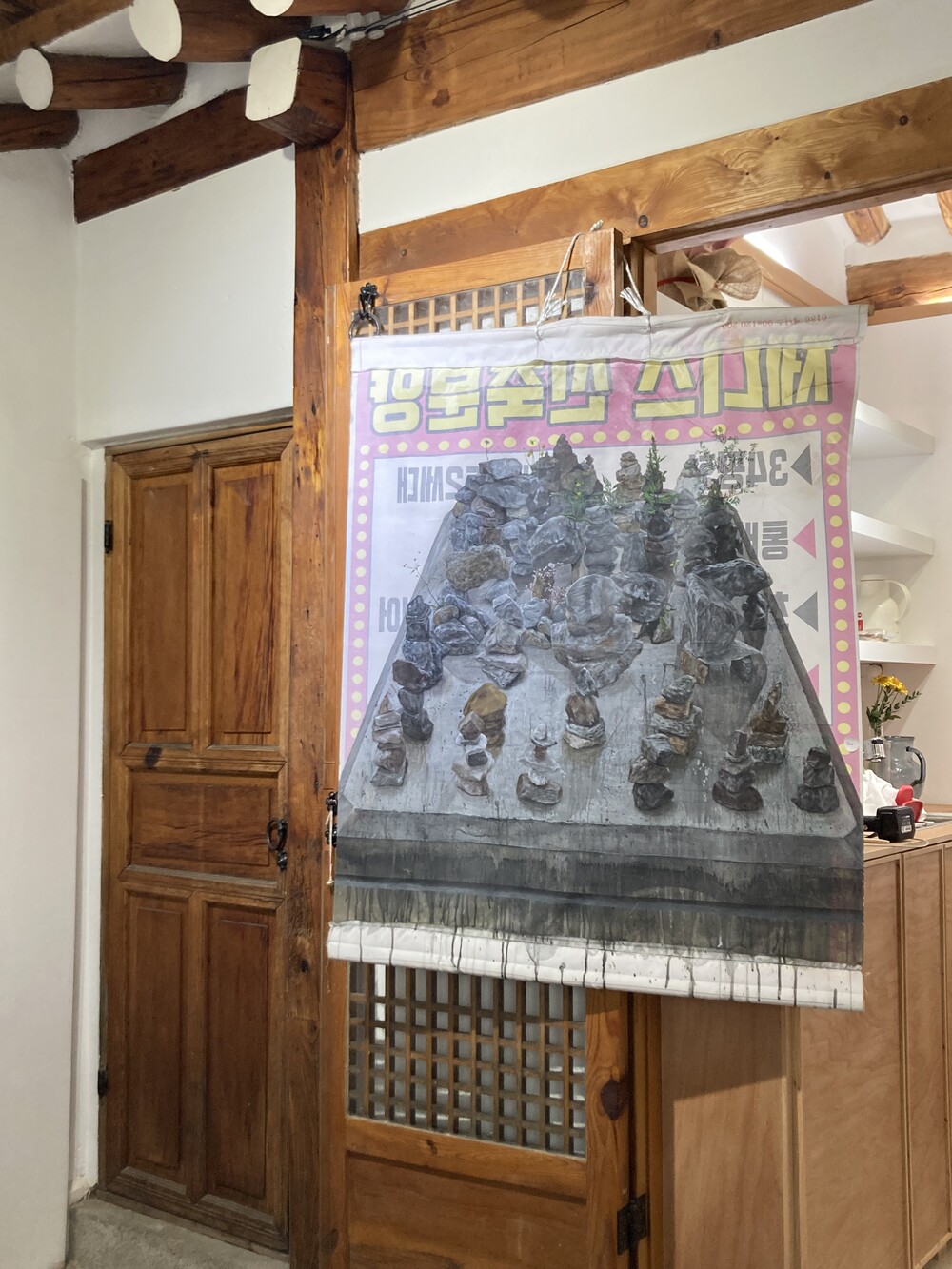
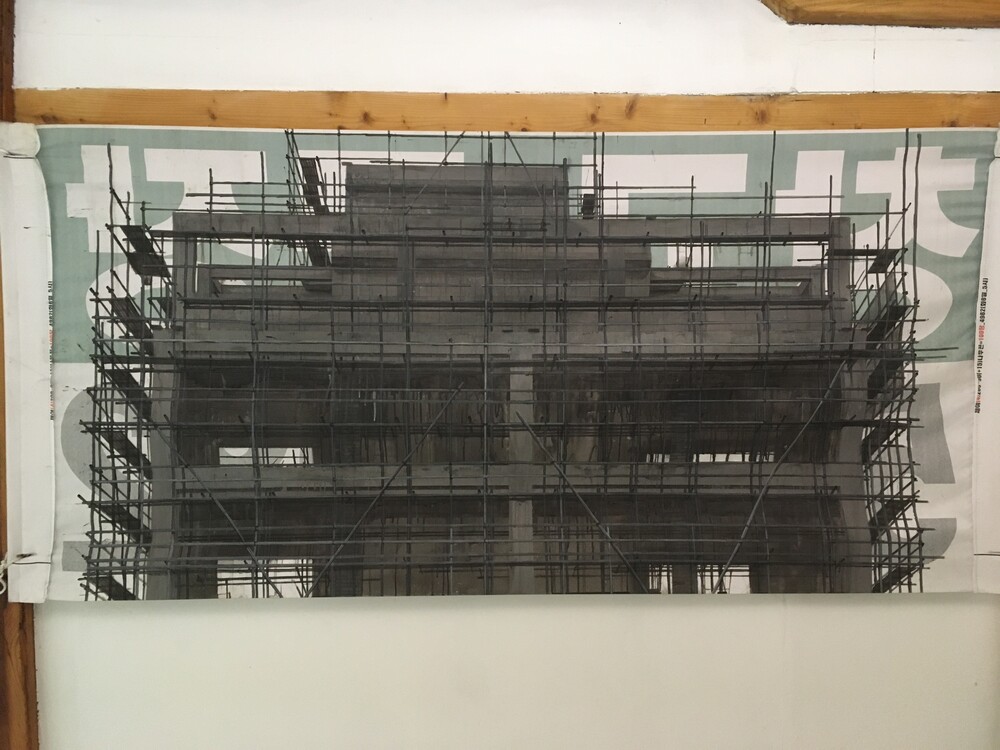
You had majored in oriental paintings. But your paintings seem a bit different.
My paintings are a bit different from the usual landscape paintings you know of. A common oriental painting is a picture of mysterious or a magnificent landscape, consisting of a beautiful fall, an attractive pine tree, or etc. And my paintings don’t have the spacial atmosphere. I knew what was important in a painting but since graduate school I wanted to do something that wasn’t too obvious. Sometimes I enlarged and sometimes I took out the subject and forms. At the time, I remember searching for the sceneries that lay around me.
Can you talk about the process of your work?
I use Jang-ji. Jang-ji is a thick paper made with many layers of rice paper. I dilute the glue and let it soak into the paper. When coloring, I don’t use the color straight. I normally lay down a base color different from the color I intend. The overlapping of layers offer subtle variations giving depth to the color. Recently I have tried using thick layers of pigments totally concealing the color underneath. I am trying to vary the way I use my materials. I am a bit timid and the changes worry me. Colors appear to be different when applied and dried so this concerned me too, but I’m trying to do things differently.
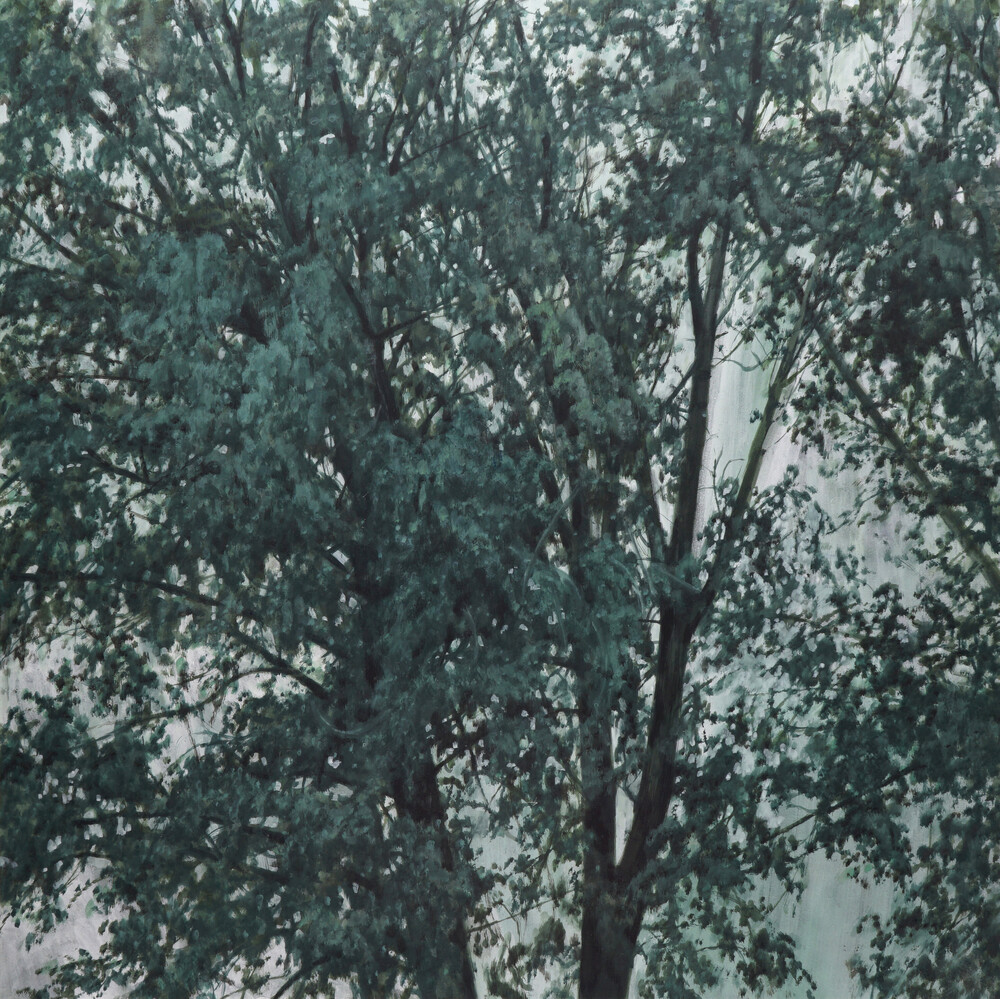
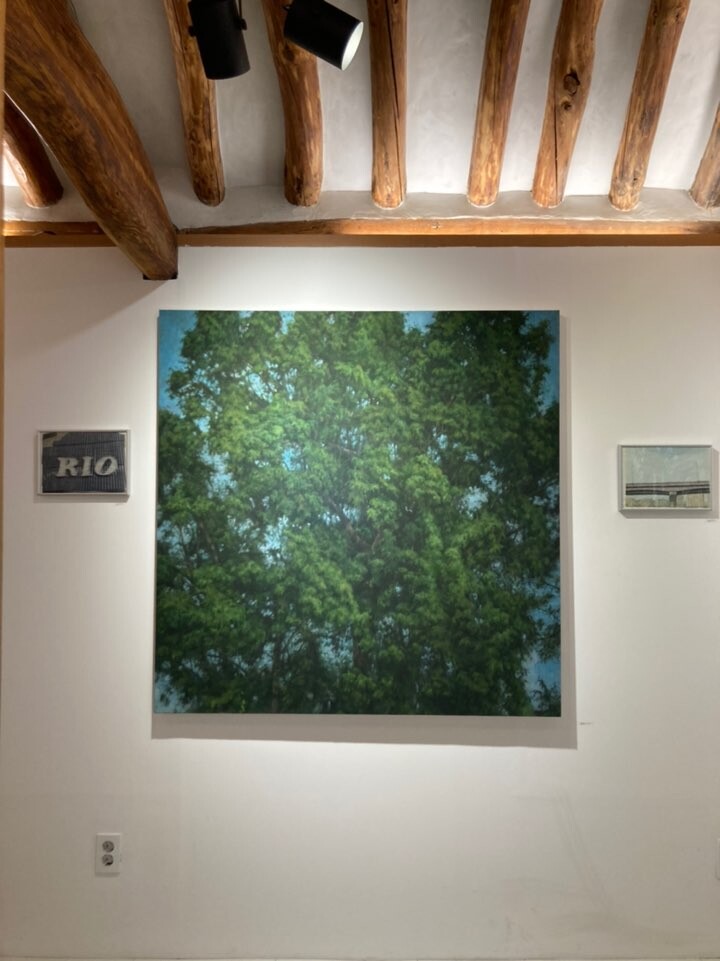
How do you plan to work in the future?
I hope to freely lay things down without drawing any sort of conclusions. I don’t want paintings to be a burden to me. I don’t know how artist do those free style works, which I am envious of. I think a bit too much. When teaching, I tell my kids to simply just do as you wish. But it seems like I can’t. Although it may never be finished and difficult to predict, someday I too will paint with confidence.
